We traveled up to the Loire Valley to see the usual suspects. It was unexpected, a dividend and did not fail to enchant us. But, this is not my direction as I write of the Loire. To satisfy the mystifying present, it is time to speak of a story lost in the heart of the France.
On our way to Blois and its beautiful chateau, as we drove through the autumn color of the rolling countryside, we ran across a minor village road, across a bridge to the lovely home, protected by a pale, French cast iron gateway that frames the Chateau de Nanteuil.
The setting on an autumn afternoon was quintessential. It is an 18th century chateau, once bought as a wedding gift for a bride in the 1920's. It is a guest house now but in the 1960's, it served as a semester experience for Cambridge students to come and improve their French and dust off the edges with a little French culture. The 1960's are an eternity ago, but only 15 years after the end of World War II. From my auspicious height of age, as I was born 5 years after the war, 15 years is a blink. Madame Anne Marie de Bernard, the then owner, was still the chatelaine of her wedding gift, in an rather obscure village on the way to Blois. The house in the 1960's served three women, the Madame, Her daughter Moune, and her English Nanny, who had arrived in the 1920's to help with the children. They had lived a lifetime in this house, observing a certain pecking order, united in sentiment and history. The stories of that history were told to a group of Cambridge girls in 1964, observing the oral tradition, handed down as it has been for thousands of years. Nanny, offering a cup of English tea, would tell the girls stories of wartime occupation when the Loire was commandeered by the Germans in Nazi Occupied France, and with fearsome consequences.
In the years before the war, it was young Englishmen, university students, who came to the Chateau for cultural enrichment. In the long history of the house, there was a certain bon vivant with young people learning about their nearest and most contrasting neighbor, France. The two ancient rivals would be tied together as allies in the dark seam of history that ran through the property like the river.
Façade nord du château de Nanteuil
In smaller numbers, young men were still coming to Nanteuil in the 60's. In 1962, Patrick Marnham, a pre Cambridge student, was sent off to the chateau for his enlightenment. He was beguiled by the ladies of the chateau and intrigued by their history. The group became lifelong friends. This Patrick Marnham became "an English writer, journalist and biographer.
He was inspired by a book written about the area and the Chateau, 'Le Grand Meaulnes’, The Chateau de Nanteuil rests in that part of the Loire known as the Sologne It is the setting for this romantic novel of magical quality, set in the landscape of a house hidden among the forests and lakes of the region, a place where childhood, innocence and love are lost. It’s author, Alain Fournier, was killed in 1914, in the first month of the First World War, making his story yet more poignant. John Fowles called it "the greatest novel of adolescence in European literature" which can only ever be partly grasped by adolescents, because they don't yet know exactly what it is they are going to lose by growing up.
Fournier in 1905
Inspired to write, Patrick Marnham went on to become a successful journalist and Paris Correspondent an editor and an acclaimed writer of travel books and biographies. He was elected as a Fellow of the Royal Society Literature in 1988. He is primarily known for his travel writing and for his biographies, where he has covered subjects as diverse as Diego Rivera, Georges Simenon, one of my favorite French crime writers, Jean Moulin, a martyr of the Resistance, and the author, Mary Wesley." I noticed that he wrote, Lourdes: A Modern Pilgrimage, an obscure topic, centered in the town of Nevers.)
His enthralling book, War in the Shadows (2020) reveals much about the women of the Chateau Nanteuil in their courageous roles during the French Occupation in WW2.
Goodreads reviews the book here.
Madame Anne Marie de Barnard, her daughter, Moune and Nanny held sway for close to 100 years over the history of the Chateau. Many of those years were gently guiding young people into the rich culture of French literature. Out of the house library of books recommended to these students was the deceptively simple, illustrated fable, ‘Le Petit Prince’ by Antoine de St Exupery, pioneering pilot, warrior and poet. Banned in Occupied France, this little illustrated classic was published abroad in 1943. It’s core message, ‘It is only with the heart that one can see rightly; what is essential invisible to the eye.’ By the Liberation of France in 1944, Antoine de St Exupery himself was dead, ostensibly shot down over Marseilles. Let us recall that this was a banned book. I will not drive home the point. I give my readers all credit.
Madame de Bernard, Nanny and Moune are the emotional thread at the heart of his detailed investigation into leading characters and events in two major networks of the French Resistance at a crucial point in the conflict. ‘War in the Shadows, Resistance, Deception and Betrayal in Occupied France,’ is a sequel to a book published 20 years ago, in 2004, ‘The Death of Jean Moulin: Biography of a Ghost.’ (According to legend Jean Moulin was General de Gaulle's emissary to the resistance movements in occupied France and became the political head of the Resistance in 1943. But despite the fact that he has entered French history as one of the great heroes of the Second World War, surprisingly little is known about him. Churchill would refer to the Resistance as ‘The bodyguard of lies’, the means by which truth is protected in wartime and then ‘can be stood down in peacetime and replaced with a wall of silence.’....yes, replaced with the wall of silence so that the sacrifces go unnoticed as we drive down the same roads traveled by men and women of boundless courage.
And yet, leave it to the talk at the hearth to renew the flame of interest. Patrick returns to Nanteuil, to refresh his memory of all he had understood from the stories of his ladies when they were alive, 15 years after the war. He researched even more detailed evidence of the their experiences under German Occupation, particularly from the moment when life for everyone at the Chateau slid into the darkness of midsummer in 1943, with the acceleration of arrests and executions.
Soon, all of us will be gone who have a visceral connection to WWII. The generation immediately born after the war have heard primary source stories from their fathers, mothers, aunts and uncles. The memory of the heroism will become more and more pastel as the hearthside history is distanced by time, thus, in the words of George Santayana, “Those who cannot remember the past are condemned to repeat it.”
We are standing at the gate of Nanteuil, which is still in the ownership of the family, now managed by Madame de Barnard’s grandson. It is a little country house hotel, not entirely different from the paying students who had sustained it up to and after the war.
We will not have the privilege of hearing the stories around Nanny’s teapot….A pot that during the war contained the reviving leaves wholly unobtainable in France. The pilots of the British SOE brought packets over especially for Nanny, on nearly silent Lysanders.
"She was a popular and highly respected figure whose bravery and undercover work turned out to range further afield than her management of a large household inhabited and surrounded by Germans.
This story is surrounded by incredible beauty, still to be unveiled by this writer. The chateaux of the Loire are unequaled. Nearby, the royal chateau at Blois, where King Henri III, under the influence of his mother, Catherine d'Medici, commanded the defenestration of the Huguenot, Duc de Guise; The monolithic Chambord with its 44 staircases; the reflective beauty of Chenonceaux built over the river Cher; Chateau Isellette. when Rodin and Camille spent several summers; the Renaissance Chateau de Chaumont; the little chateau at Amboise where Leornardo de Vinci spent his last years of life, the cellar there that exhibits a stellar collection of his drawings and designs of the first aeroplane… It is a jewel box of repose as is the nearby church where Leonardo is resting.
Amboise
Madame de Barnard, rarely accompanied her young charges on the tours of the chateaux. She resented the idea of encountering German tourists, ‘les Boches’, in France. Apparently, her particular loathing for the German race was not confined to Hitler and the Nazis. It dated back to the First World War, when Northern France was ravaged by the same enemy in another form, killing many of the young men with whom she had grown up, boys she had danced, rode and hunted with. She was not alone. In WWI, the French army suffered around 6 million casualties, including 1.4 million dead and 4.2 million wounded, roughly 71% of those who fought.
She was a passionate horsewoman, who rode to hounds throughout all the hunting seasons. Stags were the principle quarry. She was close the a neighboring family who owned a vast estate nearby. Her valuable knowledge of the ways through the wild surrounding woodlands would prove a critical advantage during the Nazi Occupation, once she and her second husband Pierre became active members of the Resistance in the Sologne. There was no hope of support from other landowners in their chateau strongholds. "It was expedient, or at least convenient for many of the upper classes to maintain their allegiance to Petain’s puppet government in Vichy. The owner of a neighboring estate Cheverney, and Master of the Hunt, rejected Madame de Bernard’s appeal for help, appalled to learn that she was supporting ‘That Judeo, Freemasonic Communist — General de Gaulle.’ (Imagine thinking that deGaulle was a Commie.!) Once she left her neighbor's house, Madame was not on friendly territory. The company of her fellow countrymen could be even more hazardous than the occupying forces.’ This is true all along the Vichy line where Resistance and collaberation met head on in violent conflict of France.
The neighboring estate of Cheverney
Invasion...quoted from Patrick Marnhem..."On June 14 1940, as German planes flew over the chateau and ‘machine gunned the refugees passing on the main road’, Madame at first took her children, servants and guests, including a family of Belgian refugees currently staying, to temporary safety in the old icehouse in the park …but there was much intense anxiety and on 17th June, with the ‘terrifying sounds of war clearly audible’, a procession of three cars bearing Madame and Monsieur, the family and staff, plus Moune’s cat, drove out of the courtyard, setting off south to escape the rapid German advance. ‘They all feared they would never see Nanteuil again.’ Madame drove the big Ford 8 with Nanny sitting beside her. Behind them, attached to the car, was a heavy double horsebox bearing the Count’s ‘luxurious American mattress with metal springs, his silver dressing case, a considerable amount of cash, table linen, bed linen and his shotguns.’ After two nights when passengers in all three cars were obliged to sleep in them, Madame lost patience with their slow progress on the crowded roads and she took the next turning into a field, where they found a deserted barn and stayed there for a week. Their living arrangements were conducted in a formal manner, Monsieur and Madame changed for dinner, and the maids worn clean blue muslin aprons to serve food which was essentially rice, jam…and a few chickens they found in the barn. Everyone slept on piles of straw, except for Madame and Monsieur, who slept on the American mattress.
Deciding to return to Nanteuil, they drove back on empty roads in just over two hours. German and French troops had passed through, and wreckage awaited them. Electricity and water had been cut off, the cellar ransacked, clothes and books stolen and personal belongings scattered among broken glass. The gardener said it was the French troops who had caused the most damage….. ‘Within days, German soldiers arrived at Nanteuil to pitch tents and occupy the park. The senior officers took the English students’ bedrooms, while the junior officers slept on the dining room floor.’… with the Stags proud heads above them."
This video is from the web site. It will give you a sense of the house as it is today.
"Madame de Bernard started working with the Red Cross in Blois, entitling her to a travel pass to and from the town, soon a helpful security cover for the underground missions she would begin to undertake, fired by her utter fury with the German presence. Physically and mentally fearless, with an unquestionable sense of authority, she would become an important member of a major Resistance network in the Sologne — ‘The Solognots’ Her husband, Pierre, was united with his wife in this dangerous work, but Nanny referred to him with a slight sniffiness, hinting that he was not quite of the same metal. Patrick Marnham records that Pierre talked too much and had a tendency to be vague about arrangements. He was however exceedingly precise about certain standards…his American double bed…his wardrobe being in order, a preoccupation with elegance and formality in all circumstances: ’Bow tie, plus fours and highly polished shoes’ of which he had forty pairs.
Madame was ‘A natural rebel but not a natural outlaw’. She shared a view with a random representation of local ‘patriots with only one conviction in common: a loathing for the country’s Vichy government and a refusal to accept that for France the war was over.’ The early secret groups of resistants would gradually become far better organized in their connections for perilous undercover undertakings, any one of which would lead to arrest.
It would only be a matter of time before certain powerful, individual Nazis would become known and feared in the area. In Blois, a man known as ‘Gestapo Bauer’ and equally intimidating was his female interpreter, a brutal woman nicknamed ‘Mona-la-Blonde.’
Madame’s most dependable kindred spirits tended to be those in a profession, contributing skills and resources : known to her through her love of horses, the first was a vet; then a hotel owner, a manager of an electrical supply company, garage owner, wine merchant, gamekeeper… and poacher.
At Nanteuil, one of Madame’s roles was to assist fugitives and evaders in making a safe passage into the Unoccupied Zone, involving crossing the demarcation line over the River Cher, 30 miles away. Jean Moulin used this route in 1940/41 in his mission for Resistance groups in the region. Nazi controls at the stopping points were strict, but Madame devised an effective form of theatre, as one means of getting people across. ‘Burying them.’ Knowing that a funeral party was likely to be treated with respect, she would arrange a funeral in the unoccupied Vichy zone, ‘hire a hearse, place a fugitive airman in the coffin and cast other evaders as undertakers, and she herself sometimes played the part of a grieving widow….’ A death certificate had been arranged ‘with a sympathetic doctor in Blois’, a service booked with a co-operative curate, and permission for an ‘ausweis’ obtained. The funeral cortege would be stamped through at the control post. Meticulous planning was required. There were many other operations on her watch which could have been subject to sabotage in the unpredictable circumstances of living alongside the enemy.
On August 1943, the Germans came to arrest Monsieur. A snapshot records everyone relaxing around a picnic hamper on the grass, only three days earlier. Before taking him away, the Gestapo ransacked the chateau, dismantling an ordinary radio, removing all his money, searching the cellars under the stables. ‘He was visibly trembling’. They told Monsieur he would be home by Saturday. (Blois- Resistance Museum)
Saturday passed, then another week…Desperately worried, Madame, with friends beside her, set off for Blois. They were directed to Orleans, with these words to her: “Your husband will be released.” She did not see him, but found herself alone in a room with two German officers and a female interpreter who said: “Would you like to sit down? Madame, we have received an order from Paris to arrest you.’
Madame was interned at Compeigne Royallieu, the only fully German run camp for French terrorists. ‘The ominous yellow postcard’ dated 29 January 1944, arrived at Nanteuil: ‘Anne Marie-de Bernard departed leaving no address.’ Departed = Deported.
Moune now worked at the Prefecture in Blois, which gave her, like her mother, a permanent pass to come and go….so useful now in her additional work as a courier for another local group of Resistants, part of a much larger Communist led network, ‘Front National’. She was convinced she would never see her mother again.
Nanny took charge of the Chateau for the remaining two years of World War II. Her employers were both in prison, their cash taken by the Germans, their bank accounts frozen. Stalwart in the face of daily fear, apprehensive for the safety of spirited Moune and her younger sister Bette, and for the loyal staff there who all worked without pay for the duration. The Germans were an unavoidable presence at Nanteuil, and whilst Nanny diplomatically, literally, polished their boots.
Tirelessly, Nanny stayed on top of this unusual household, even as she continued to support the Resistance and others in the various Intelligence agencies connected to it; Marnham points out the superior knowledge of this arcane world of subterfuge, espionage, counter espionage and double or triple dealings. Nesta Cox, Nanny’s real name, was how long were a highly intelligent heroine in her own right. It is to her among others that that Patrick’s book is dedicated."
D Day, June 1944. The Allied invasion of France, the signpost to victory. In France itself, there was no end of new trouble. Conditions did not improve in any way for French civilians.
One of Nanny's tea-side memories of early Liberation and Decampment was on an afternoon in August of 1944. With fierce battles once again being fought on French soil, there was a new rash of terrible, indiscriminate Nazi reprisals. One example of many in the Loire, a seventeen year old farmhand in his shirtsleeves, working in a local field, was stopped for his papers. His jacket was out of reach and he could not immediately produce them. He was instantly shot.
These were nerve wracking times. Nanny remained steady. She started to always carry her precious prayer book in her pocket whenever she left the house. There were strategic attacks by the Allies to be contended with, as well. When the nearby river bridge was destroyed by the RAF, she said ‘The planes were flying in formation quite low over the chateau, then they heard the explosions before the planes circled over the house again before departure.’ (Were they letting Nany know they were aware of her and the Chateau? We can only speculate.)
Although France was liberate in August 1944, there were many from that country for whom the war showed no signs of ending, the very reverse in fact. Cruel conditions were stepped up on the Prisoners of War and sent to death camps in Germany and Poland. A notorious women’s hard labour camp was Ravensbruck, guarded by 546 female SS guards, Aufseherinnen. The prison policy was to work the prisoners to death. This is where Madame Anne Marie de Bernard had been taken.
The friendship of women prisoners was fundamental to sustaining heart and soul, as their physical selves deteriorated and disintegrated. Anne Marie is remembered by her friends as someone to whom others turned for help. ‘Her incredible vitality and strength of character,’ remembered one. Another wrote that ‘She could still see Anne Marie at the interminable roll calls, standing straight, always ready to fight back, so that her friends often had to calm her with a gentle squeeze of the arm, lest she become a target of a fatal punishment beating.’ (She would have been in her 40's at this time.)
In the last months, Madame de Bernard was in a group ‘marched along frozen winter tracks’ to a subsidiary camp where they were worked day and night, with almost no food and without blankets at night. She was one of the few to return from Ravensbruck in an indescribable condition. A friend saw her in the freezing dawn on the morning she was released, ‘Still queuing and on her feet, but so thin, so weak that the breeze could have blewn her over like a reed.’
When the war came to an end, there was no news of the indomitable, courageous Anne Marie de Bernard. She was assumed dead. On 12th July 1945, Nanny heard a list of returning deportees read out on French Radio and Madame de Bernard’s name was on it. Her life had been saved by a thread. In April 1945, she had been taken to a Swedish hospital to be treated and carefully nursed back to life. When she returned home later that year, she was still virtually a skeleton.
Her husband Pierre, a prisoner at Buchenwald concentration camp, had returned to Nanteuil sooner, desperately thin and with raging pneumonia. His prison experience never left him. Back in France, all resources for civilized living, food, fuel and clothes, had been usurped by the enemy and rationing continued for a long time after the war. Madame and Monsieur needed to retrieve their strength to start their lives again. There were no guests at the hospitable Chateau de Nanteuil for several years.
In 1947, the Contesse de Bernard was awarded the Legion d’Honneur, the highest French Order of Merit.
A young, Jane Torday, remembers during her 3 month stay at Nanteuil in 1963.:
" Madame was concerned about the use of water, the expense of it. Baths were to be small and limited in number; washing our own clothes was frowned upon, forbidden if discovered. We were all used to English home economies… cold houses… but Madame’s seeming discouragement of measures of cleanliness….we put it down to being French! These domestic anxieties were left over from the war under Occupation, when water was often cut off and simple soap was completely unavailable."
Madame de Bernard was a quiet woman with strong feelings on the side of right and justice, and a lifelong tendency to flare up in anger. This was in full measure what she felt in the shame of France’s military collapse. She isolated herself from her friends by her total opposition to Marshall Petain’s call for surrender. She knew the resistant direction she must take, although not yet by which route. Patrick Marnham concludes that ‘It was anger that kept Anne Marie alive in Ravensbruck and some of it remained with her for the rest of her life.’"
Dave and I stood at the gate of the chateau. It was not necessary to see the property. I wanted to touch the gate and the gravel in the driveway. I wanted to stand where Anne Maria de Bernard had stood when she was arrested and sent to Ravensbruck.
I was alive 80 years later, in the juxtaposition of perfect bliss, in the womb of natural beauty, and a spot that was once studded with the sheer, unbridled evil. It is as close to hell as I ever wish to be but we shall see what the future brings. I did as I have always done, I prayed for the repose of her soul with a hope that she still can imbue us with her courage from the beyond . What an incredibly fearless woman...and we barely know her name. (Anne Maria de Bernard-d. 1971)
I recommend two additional books from this era. Time's Echo: The Second World War, the Holocaust, and the Music of Remembrance By: Jeremy Eichler and Les Parisiennes: How the Women of Paris Lived, Loved, and Died Under Nazi Occupation By: Anne Sebba Neither book is for the faint of heart but both books are riveting. I will share a thought from "Parisiennes" When a Parisian woman returned from Ravensbruck in 1945, she returned to a Parisian world that, in many ways, was untouched or refused to be touch by the deep horrors of the war. A woman was asked where she had been and she replied that she had survived Ravensbruck. The reply came back to her..."Well, it wasn't so bad there." As I said, proceed with caution.
Respectful thanks to Patrick Marnham and Jane Torday for their primary source writing. I quoted them liberally.
I close with this thought. Last evening, 35 women gathered in a small coastal town in mid-coast Maine. It was an impromtu, spontaneous mixed bag event. Women from the Sect Board, the Garden Club, working women, retired women, neighbors, group types and non-group types, town leaders. It was vibrant, dare I say electric. Our love, support and compassion for each other was palpable. I'll bet women are gathering everywhere to be present for one another, to SEE one another and listen carefully, lovingly. We will find our way back together.
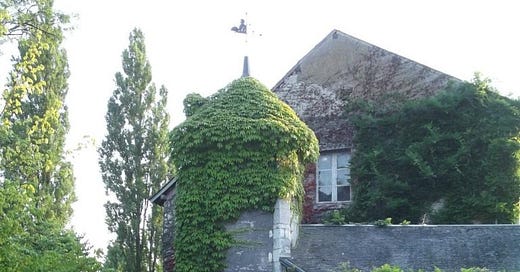



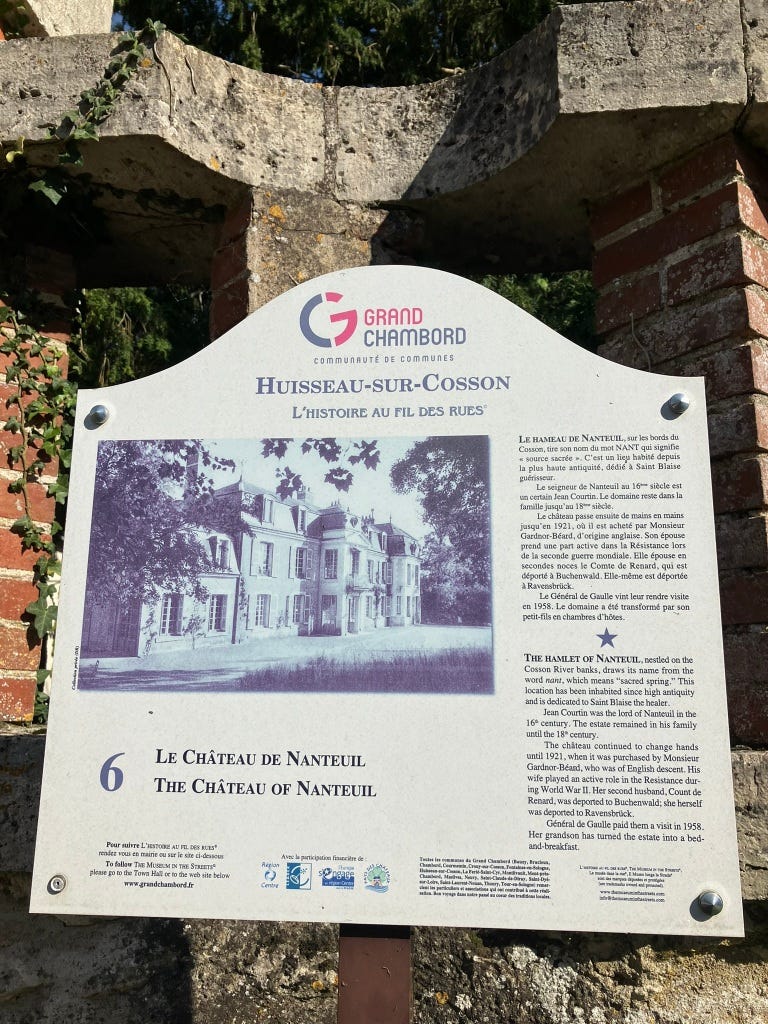
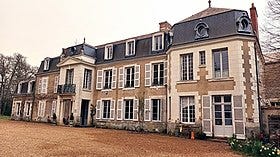

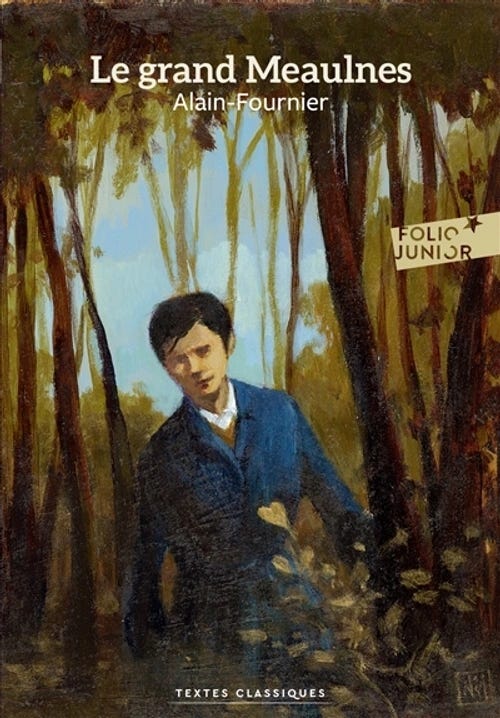





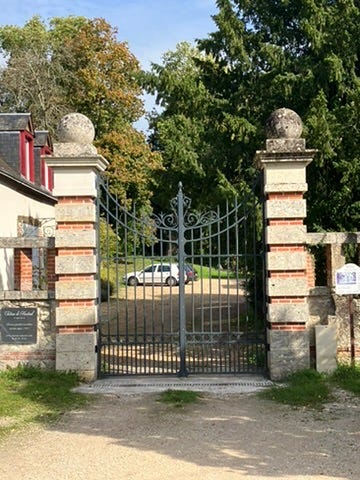
Mary, thank you for your comment. It must have been a fascinating experience. Dave and I were taken with the story and that stunning location. My very best, Mary
So pleased to hear more about Madame and Nanteuil. I spent 3 months there on 1956 before going up to Cambridge; my brother preceded me in I think 1953 before his time in Cambridge reading Modern Languages. They were all there - Gosh, it all comes back to me